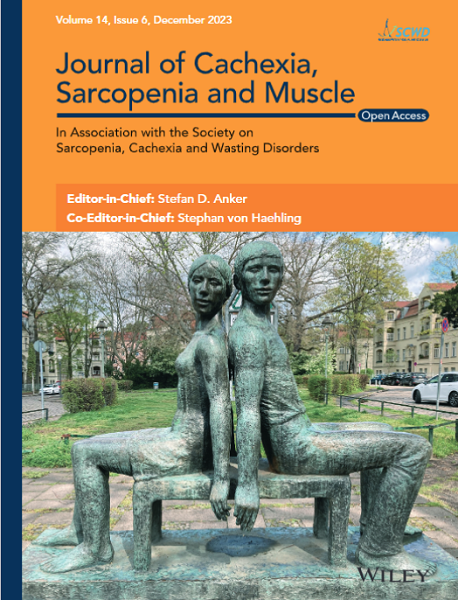Development and Validation of Quantile Regression Forests for Prediction of Reference Quantiles in Handgrip and Chair-Stand Test
Abstract
Background
Muscle strength is one of the key components in the diagnosis of sarcopenia. The aim of this study was to train a machine learning model to predict reference values and percentiles for handgrip strength and chair-stand test (CST), in a large cohort of community dwellers recruited in the Longevity check-up (Lookup) 8+ project.
Methods
The longevity checkup project is an ongoing initiative conducted in unconventional settings in Italy from 1 June 2015. Eligible participants were 18+ years and provided written informed consent. After a 70/20/10 split in training, validation and test set, a quantile regression forest (QRF) was trained. Performance metrics were R-squared (R2), mean squared error (MSE), root mean squared error (RMSE) and mean Winkler interval score (MWIS) with 90% prediction coverage (PC). Metrics 95% confidence intervals (CI) were calculated using a bootstrap approach. Variable contribution was analysed using SHapley Additive exPlanations (SHAP) values. Probable sarcopenia (PS) was defined according to the European Working Group on Sarcopenia in Older People 2 (EWGSOP2) criteria.
Results
Between 1 June 2015 and 23 November 2024, a total of 21 171 individuals were enrolled, of which 19 995 were included in our analyses. In the overall population, 11 019 (55.1%) were females. Median age was 56 years (IQR 47.0–67.0). Five variables were included: age, sex, height, weight and BMI. After the train/validation/test split, 13 996 subjects were included in the train set, 4199 in validation set and 1800 in the test set. For handgrip strength, the R2 was 0.65 (95% CI 0.63–0.67) in the validation set and 0.64 (95% CI 0.62–0.67) in the test set. PCs were 91.5% and 91.2%, respectively. For CST test, the R2 was 0.23 (95% CI 0.20–0.25) in the validation set and 0.24 (95% CI 0.20–0.28) in the test set. The PCs were 89.5% and 89.3%. Gender was the most influential variable for handgrip and age for CST. In the validation set, 23% of subjects in the first quartile for handgrip and 13% of subjects in the fourth quartile for CST test met criteria of PS.
Conclusions
We developed and validated a QRF model to predict subject-specific quantiles for handgrip and CST. These models hold promise for integration into clinical practice, facilitating cost-effective and time-efficient early identification of individuals at elevated risk of sarcopenia. The predictive outputs of these models may serve as surrogate biomarkers of the aging process, capturing functional decline.


 求助内容:
求助内容: 应助结果提醒方式:
应助结果提醒方式:


